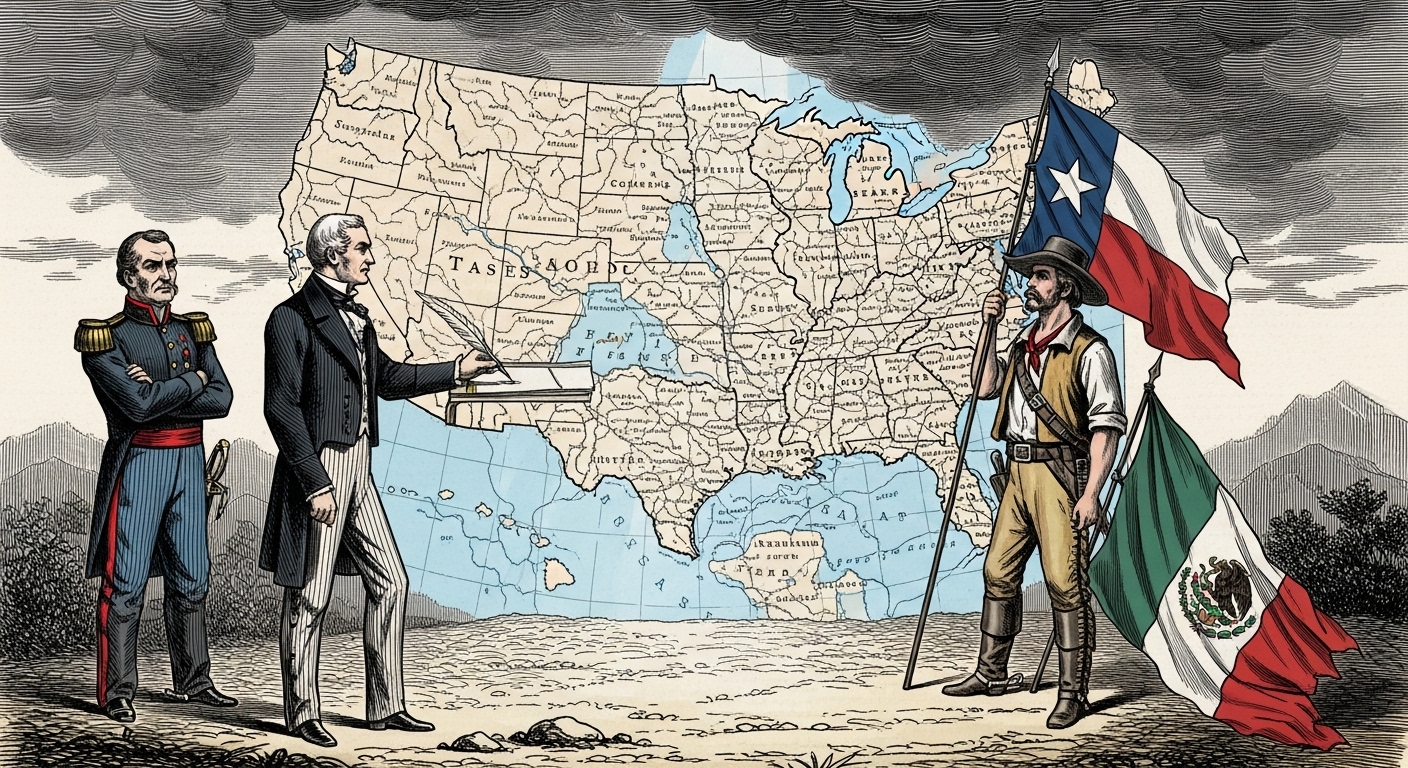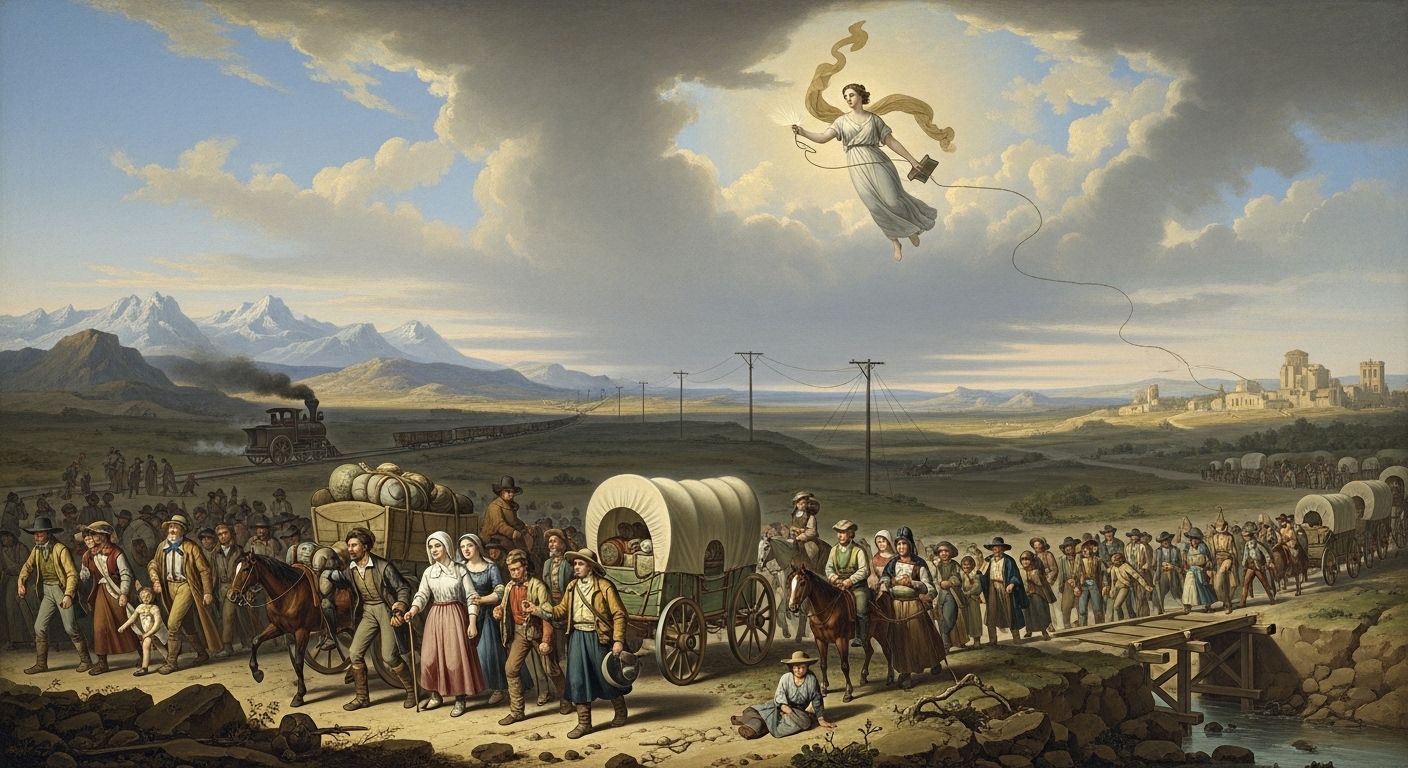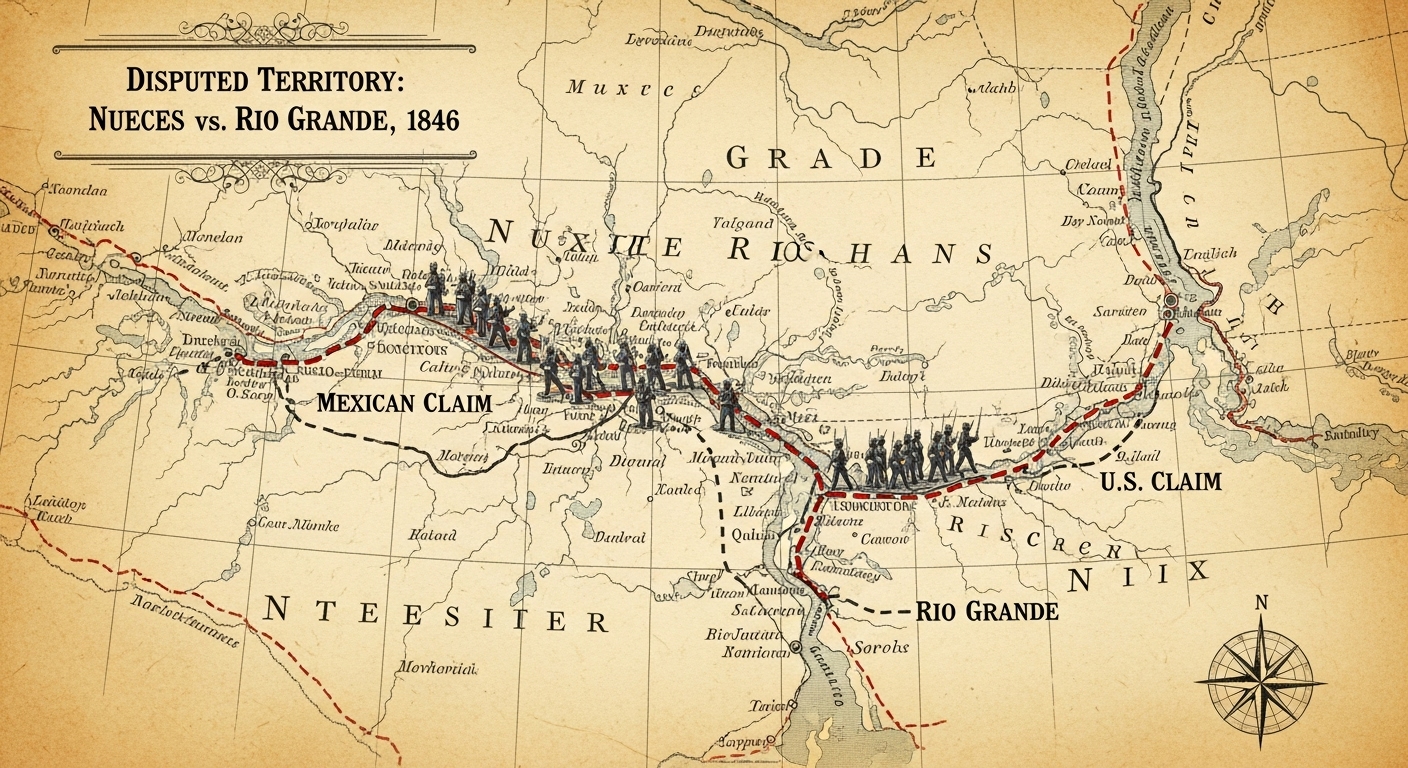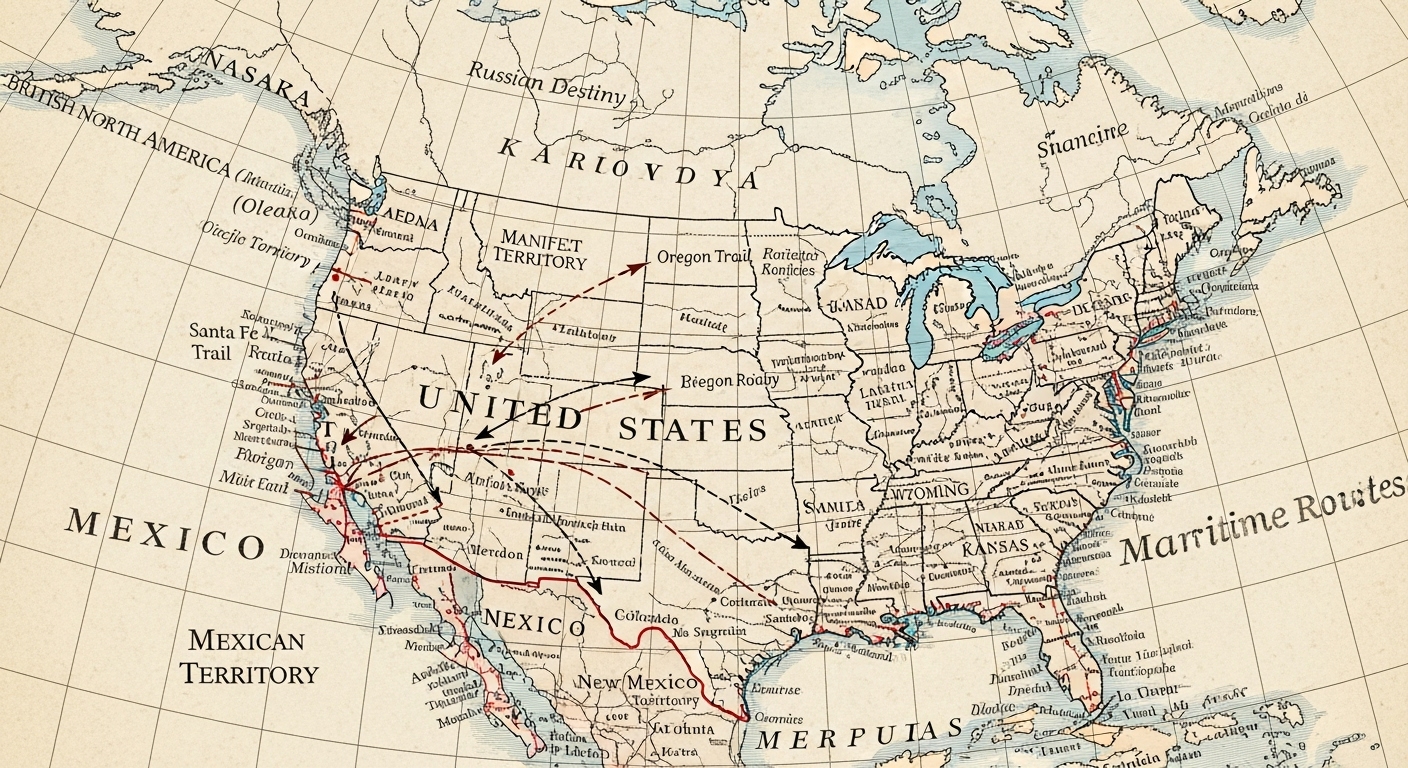Ever wondered how two burgeoning nations found themselves locked in a conflict that redrew the map of a continent? The Mexican-American War wasn’t just a simple border dispute; it was a dramatic collision of ambitions, ideologies, and unresolved grievances that forever changed North America.
Imagine two young nations, both eager to forge their identities, suddenly on a collision course. On one side, a rapidly expanding United States, bursting with confidence and a vision for its future. On the other, a newly independent Mexico, bravely wrestling with internal turmoil while trying to assert control over its vast, sprawling northern territories. This wasn’t just about land; it was about vastly different aspirations and circumstances. In this deep dive, we’ll peel back the layers to explore the multifaceted causes of the Mexican-American War, uncovering the tensions that propelled these two nations into a bitter and transformative conflict.
Setting the Stage: A Continent in Flux
America’s Young Republic: Driven by Expansion
The mid-19th century United States was a nation on the move, experiencing explosive growth and an almost insatiable urge for westward migration. Americans believed in a special destiny for their nation—a concept often deeply entwined with ideas of American exceptionalism and a divine right to spread democracy and economic opportunity across the continent. This wasn’t just about grabbing more land; it was about a grand vision, valuable resources, and the deeply held belief in an unfolding national narrative. The irresistible allure of fertile lands and the promise of wealth drew countless settlers further west, inevitably setting the stage for clashes with existing populations and territorial claims.
Mexico’s Fragile New Beginning: A Nation in Turmoil
Meanwhile, Mexico, a nation that had only just gained its independence from Spain in 1821, faced a starkly different and far more challenging reality. The path to self-governance was fraught with instability. The country grappled with frequent changes in government, internal strife, and a national treasury often teetering on the brink of collapse. Its northern territories—including vast stretches of what we now know as California, Arizona, New Mexico, and Texas—were enormous, sparsely populated, and incredibly difficult to govern and defend effectively from distant Mexico City[1]. This power vacuum, coupled with the inherent difficulties of patrolling such expansive borders, made these lands particularly vulnerable to external pressures, especially from its ambitious northern neighbor.
The Catalyst: The Annexation of Texas (1845)
Texas Independence (1836): A Precursor to Conflict
One of the most immediate and significant causes of the Mexican-American War revolved around the thorny issue of Texas. American settlers, many of whom were drawn by generous land grants, had established thriving communities in Mexican Texas. By the 1830s, growing cultural and political differences, particularly concerning slavery and the increasing centralization of Mexican authority, led to intense friction. In 1836, these American colonists, along with some Tejano allies, famously declared independence from Mexico, igniting the Texas Revolution. Iconic battles like the Alamo and the decisive victory at San Jacinto solidified their claim, establishing the Republic of Texas. However, Mexico never formally recognized Texas’s independence, steadfastly considering it a rebellious province that would eventually be reclaimed.
The US Debate Over Annexation: A Nation Divided
For almost a decade after its revolution, Texas existed as an independent republic. The burning question of its annexation into the United States became a fiercely debated topic in American politics. Southern states largely championed annexation, viewing it as a prime opportunity to expand slaveholding territory and bolster their political power in Washington. Conversely, many in the Northern states vehemently opposed it, fearing both an expansion of slavery and the almost inevitable war with Mexico over the still-disputed territory.
Texas Annexation: The Point of No Return
Despite Mexico’s clear and repeated warnings that the annexation of Texas would be considered an act of war, the United States moved forward, formally annexing the Republic of Texas in December 1845[2]. This bold move, fueled by an escalating expansionist sentiment in the U.S., was arguably the single most immediate trigger that pushed tensions past the point of no return. Mexico, understandably viewing Texas as stolen territory, broke off diplomatic relations with the United States almost instantly. It was a profound declaration of intent by the U.S. and a deep insult to Mexican sovereignty, directly setting the stage for armed conflict.
The Driving Ideology: Manifest Destiny
What Was Manifest Destiny, Exactly?
Underpinning many of America’s expansionist ambitions was a powerful and pervasive ideological force known as Manifest Destiny. This widely held belief in the 19th century asserted that American settlers were not just destined, but even divinely ordained, to expand across North America, spreading democracy and capitalism from the Atlantic to the Pacific[3]. The term itself was famously coined by journalist John O’Sullivan in 1845, conveniently coinciding with the heated Texas annexation debate.
Westward Expansion as a ‘God-Given Right’
Manifest Destiny wasn’t merely a catchy political slogan; it was a deeply ingrained cultural conviction that framed westward expansion as a ‘God-given right.’ Proponents sincerely believed it was America’s sacred mission to “civilize” the continent, bringing progress and American values to new territories. But beyond this perceived moral imperative, significant economic motivations lurked. The fervent desire for access to Pacific ports, especially the coveted San Francisco Bay, was paramount for expanding lucrative trade routes with Asia, promising immense commercial wealth. This grand vision of a transcontinental nation fueled much of the American push for territorial acquisition, often without much regard for the existing claims of other nations.
Manifest Destiny: Fueling America’s Grand Ambitions
Crucially, Manifest Destiny provided a potent moral and ideological justification for territorial acquisition, even if it meant risking conflict. It allowed American leaders and the public to view their actions as noble and righteous, rather than aggressive or imperialistic. This powerful belief system was instrumental in shaping public opinion and gathering widespread support for policies that would inevitably lead to war, playing a truly significant role among the deeper causes of the Mexican-American War.
The Point of Contention: The Disputed Border
The Contested Border: Nueces vs. Rio Grande
Even after Texas officially joined the Union, the precise border between Texas (now part of the U.S.) and Mexico remained fiercely contested. Mexico steadfastly claimed the southern boundary of Texas was the Nueces River, which had historically served as the provincial line. However, the United States, inheriting Texas’s claim, adamantly insisted the border lay much further south, at the Rio Grande. This strip of land—the crucial territory between the two rivers—became an explosive flashpoint.
President Polk’s Provocative Strategy
President James K. Polk, a staunch expansionist and a fervent believer in Manifest Destiny, was absolutely determined to acquire vast Mexican territories, including California and New Mexico. He initially preferred to buy these lands. When his diplomatic attempts to purchase these territories were firmly rebuffed by a proud, though financially struggling, Mexico, Polk opted for a far more confrontational approach. In January 1846, Polk issued orders for General Zachary Taylor and his U.S. troops to march directly into the disputed territory between the Nueces River and the Rio Grande[4]. This was a highly provocative move, perceived by Mexico as a blatant invasion of their sovereign land, effectively laying siege to the Mexican city of Matamoros.
Blood on the Border: The War Begins
Polk’s calculated strategy worked exactly as he intended. On April 25, 1846, Mexican forces bravely crossed the Rio Grande and attacked a detachment of General Taylor’s troops in the disputed territory, resulting in the deaths of several American soldiers. Upon receiving news of this skirmish, President Polk swiftly declared that Mexico had “shed American blood upon American soil” and called for an immediate declaration of war. Congress, despite some internal dissent, approved the declaration on May 13, 1846, officially marking the beginning of the Mexican-American War. This incident, while seemingly minor, was the direct catalyst Polk needed to justify a full-scale military conflict. The cumulative effect of diplomatic failures, coupled with Polk’s aggressive land claims and strategic troop deployment, had made war all but inevitable.
Broader Geopolitical and Economic Factors
Beyond these immediate triggers, a confluence of broader factors significantly contributed to the conflict. The United States had long harbored a keen interest in acquiring strategic ports on the Pacific coast, particularly the coveted San Francisco Bay, which was seen as vital for facilitating expanded trade with Asia. Mexico’s vast, mineral-rich northern territories were also eyed as prime targets for American economic exploitation. Furthermore, the persistent political instability within Mexico itself—its often-struggling ability to effectively control its vast frontiers or present a unified governmental front—regrettably emboldened American expansionists. It’s a classic historical pattern: the perceived weakness of one nation can often tempt the strength and ambition of another, and in this case, Mexico’s internal strife regrettably played directly into the hands of American expansionist desires.
Conclusion: A War of Profound Consequences
The causes of the Mexican-American War were a truly complex intertwining of fervent American expansionist desires, fueled relentlessly by the ideology of Manifest Destiny, the intensely contentious issue of Texas annexation, and the heated, unresolved dispute over the U.S.-Mexico border. Mexico’s internal struggles and its unwavering refusal to relinquish more of its precious territory created an unbridgeable chasm with a powerful, determined, and rapidly expanding United States. What unfolded was a brutal, though relatively brief, conflict that had profound and lasting consequences for both nations, forever altering the geopolitical landscape of North America.
To truly grasp the motivations, complexities, and long-term impacts of this pivotal period in history, it’s absolutely essential to look beyond just the battlefields and delve into the deep-seated ambitions, perceived rights, and unresolved grievances that set these two nations on their fateful, tragic course.









